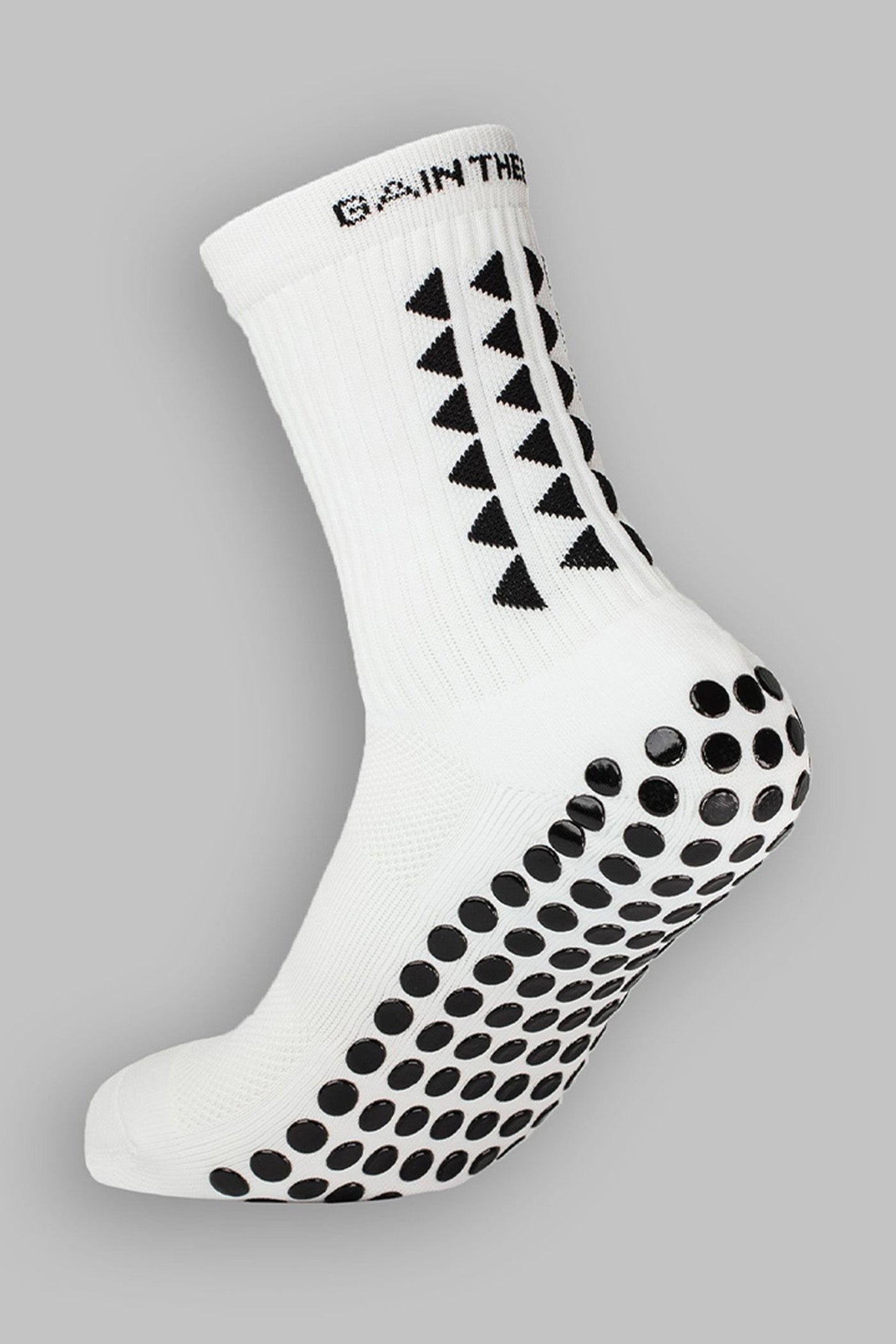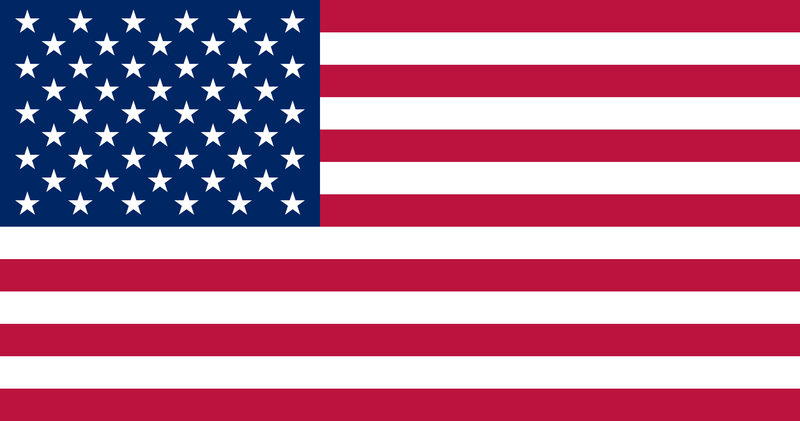Socks can have a big effect on life and sporting activities. The right sock can make or break your performance the way a great golf club can improve the swing of a golfer.
But with so much pressure on choosing the right sock, wading through the hundreds of natural and synthetic blends can be overwhelming.
Fortunately, this guide will help you find the best sock material for your needs. Let’s discuss the most used sock materials, what impact the materials chosen for production, and which materials and blends you should look for when choosing your socks.
What this article covers:
- What Is the Best Material for Socks?
- What Materials Are Socks Made of?
- What Determines the Chosen Sock Material
What Is the Best Material for Socks?
Let’s take a look at the best sock materials so that you can make the right choice for your feet.
Cotton
Cotton is the most used sock material in the world and it is so for a reason. It’s a breathable material, it’s extremely strong, it holds onto color nicely, and production costs are low.
With so many benefits and an affordable manufacturing cost, companies can provide excellent socks for a great price. Combined with silicon grips we can great amazing athletic socks, like these white football grip socks, to enhance performance without breaking the bank.
Nylon
Nylon comes with many awesome benefits. It’s a durable sock material and it’s very versatile. It can be used to create thin or thick socks and improve the elasticity of unyielding cloth fibers.
When Nylon first hit the scene in 1939 as the first completely synthetic material, it was more expensive than silk. Today, the cost of manufacturing nylon is relatively cheap. Consumers can now enjoy the benefits of nylon without having to pay insane prices for them.
Elastic
Elastic is another synthetic fiber that works great at producing performance-enhancing, affordable socks. Elastic is combined with nylon and cotton to create super durable and breathable socks.
But it’s mostly known for its stretchy nature. As the name suggests, elastic sock fiber allows socks to stretch to extreme lengths. The best part? It holds its shape. Socks with this type of blend are amazing because they last long while still being extremely affordable.
If you’re looking for a durable, breathable, and affordable sock, then a mix of elastic, nylon, and cotton will be your best bet.
So, next time you wonder what ankle socks and other compression socks are made of that gives them such amazing gripping power, think of our elastic and cotton blend, coupled with silicon.
What Materials Are Socks Made of?
We’ve come a long way from ancient socks, which were made of matter animal hair. And with so many sock types, brands, and costs on the market, it’s no wonder there are dozens of materials and blends alongside them.
Let’s take a look at some of the most common sock materials used today.
Cotton
As mentioned earlier, cotton is the most used sock material in the world and has been for decades. Because it’s a natural fiber and the material is so lightweight, athletes can benefit from the support of a sock without being weighed down by the feel of one.
Unfortunately, because cotton is a plant, production is sometimes impacted by weather. When you see a sudden increase in cotton prices, then there is a shortage due to weather or pests.
Besides the most commonly used generic cotton, there is also recycled and organic cotton. Both options are a bit more expensive but focus on providing environmentally friendly cotton options.
Polyester
Whereas cotton is the most used natural sock fiber, polyester is the most used synthetic sock fiber. Polyester is known for drying quickly, being strong, and being abrasion resistant–all of which are great characteristics for socks.
Polyester is also known for being super stretchy and taking colors well. If a company wants to add prints of vivid colors to its socks, polyester would be the way to go.
Wool
Wool is known the world over and has been the material of choice for many countries for centuries. Not only is it easy to work with but it’s also extremely breathable. Wool socks allow athletes to stay warm without having to deal with sweaty feet.
For example, crew socks are used for heat, protection, and mobility without being cumbersome. Wool helps achieve these goals.
Wool is also known for retaining its shape. The fibers are coiled, which means they stretch when accommodating a foot and spring back to their original size when the tension is gone. Because of this, wool socks go longer without losing their original structure.
Bamboo
Bamboo is a fast-growing grass that is great for quick, sustainable growth. It produces a breathable material fiber with a natural sheen that looks almost like silk.
Besides looking luxurious and being breathable, bamboo is also very durable and hypoallergenic. It’s a great option for athletes in need of a sock that won’t irritate their skin, especially when sweating a lot.
Angora
Angora is a lesser-known sock material but is still loved by many. Made from the soft-haired Angora rabbit, these types of socks are usually warm and soft.
You would think these types of socks would be expensive, considering Angora fur is almost 9 times warmer than wool, but they’re available by most retailers at affordable prices. They’re also great for winter sporting and keeping warm in extreme weather.
Elastic
Elastic is a synthetic material and is usually blended with other stretchy materials like nylon and cotton to create super stretchy and strong sock blends.
Elastic is affordable and easy to produce. The best part about socks with elastic blends is that they retain their shape. Unlike many sock blends that lose their shape with use, elastic jumps back to the original shape no matter how
Flax
Flax is the oldest fiber in the world and has been used to make garments for millennia. The fiber is removed from the inner bark of the plant and then processed into the material we love today.
Besides its multitude of uses, flax fiber is known for being lightweight and airy. It’s also extremely strong and is even stronger than cotton.
Nylon
Nylon is a silky thermoplastic. It’s made from petroleum and can be melted into fibers, which are then used in the production of countless products around the world. The most notable among them is socks.
While not impossible, Nylon is rarely used as a standalone material when making socks. Instead, it’s usually added to other fibers to create a blend that utilizes the benefits of both materials.
Silk
When most people think of silk, they think of expensive gowns and glitz and glamor. But silk socks are a thing, as strange as it sounds.
Silk is a protein fiber obtained from the mulberry silkworm. Besides being super soft and fine, silk socks are also extremely strong.
Unfortunately, the lengthy production has upped the price of silk and made it a luxury item. But don’t let it stop you from splurging and getting silk socks as gifts.
Acrylic
Another sock material that isn’t as well known is acrylic. Made from a synthetic polymer, this engineering plastic is extremely versatile and can be melted into fibers for socks.
Acrylic socks are warm and lightweight. They’re also wonderfully soft. Another big bonus is the way acrylic holds onto the dye color. It can absorb bright colors and retain them better than most natural fibers.
Rayon
Rayon is a natural fiber found in wood pulp. While the majority of rayon is harvested from eucalyptus trees, it isn't necessary that it only comes from eucalyptus trees. As long as the plant produces pulp, rayon can be made.
Rayon is known for being very soft and breathable. It’s also great at absorbing moisture and makes for a great sweat-absorbent sock. Its easy production also makes it one of the more affordable sock fiber options on this list.
Modal
Modal is a version of rayon. It’s a natural fiber harvested from beech trees and is known for being strong. It also holds onto color better than cotton does.
While you aren’t going to find many 100% modal socks, you will find them mixed with common fibers like cotton and nylon. They do this to capitalize on the strength of the modal fibers.
Lurex
Lurex is a synthetic fiber and is recognized by its metallic sheen. The fabric is usually used to add detail or style to socks and is blended with other materials to enhance the elasticity and stretch of the sock.
Spandex
Spandex, also known as elastane, is a super stretchy synthetic material known for being used to create compression garments and shapewear. Some parts of the world might also know it as Lycra, the 1958 shapewear brand from the United States.
As socks, spandex can be great. It’s magnificent at holding shape and is a great material for compression socks. It’s also often used to make ankle socks.
What Determines the Chosen Sock Material
Sock companies don’t all use the same materials for their socks. Many things influence the sock material chosen during the production process, but these are the most prominent deciding factors.
Stretch
Determining what type of stretch the company–and you–want will determine what material to choose. As a general rule, natural fibers are less stretchy while synthetic blends have more stretch, sometimes to the extremes.
So, if the perseverance is for a stiffer sock that doesn’t lose shape, a 100% blend will be best. But if they want to cater to people who like stretcher socks and who wear football grip socks–we’ve got a guide on how to wear football grip socks if you’re curious– sock blends with latex, nylon, elastic, etc. will be the best.
Production Costs
Production cost has a massive influence on the sock martial companies choose.
While many companies will have pure cotton or wool socks, there tend to be more expensive. Other, rare production materials like silk can also lead to inflated sock prices.
Is it necessary to have the best, purest sock materials? No. Modern production has improved the quality of more affordable sock materials a lot. But personal taste is still a major factor. Some people like pure and organic socks and are willing to pay for them.
On the opposite end of the spectrum is completely synthetic materials. While these aren’t always bad, they’re very rarely great. Production for complete synthetics also has a history of unsustainable energy use that is bad for the environment.
Fortunately, most modern sock companies meet the market in the middle. Cotton, bamboo, wool, etc. combined with synthetic blends allow companies to create great socks while still keeping production costs low. That means you pay less when you purchase a pair.
These blends also allow consumers to have the best of both worlds. You can enjoy the comfort and foot health that comes with breathable. natural materials. But you also get to enjoy the stretch and durability benefits that come with synthetic materials.
Purpose
The purpose of a sock has a big effect on the sock material.
You wouldn’t use a thin sock blend for a winter sock or use a silky material for mid-calf grip socks. One would leave the athlete with no heating during cold weather and the other wouldn’t absorb sweat and destroy the sock’s grip.
To optimize the purpose of the socks, companies use different blends for different purposes. For example, to ensure grip socks help with soccer, a company will create a blend that prioritizes the athlete's movement and support with a strong but flexible blend.
Conclusion
There are many sock materials–synthetic and natural–to choose from. While none are inherently bad, some have a better impact on performance than others. Why would you choose subpar socks when you can choose socks guaranteed to improve your performance?
Speaking of performance: If you’re dedicated to excellence, then our sport grip socks are the socks for you. Voted the #1 grip sock in the world, Gain The Edge socks will help you elevate your game to the next level.
Did our blog meet your needs? You might also find our other guides helpful:






















